Abstract
An enzyme-linked immunosorbent assay (ELISA) for determining the class-specific humoral antibody response to the lipopolysaccharide antigen from Shigella dysenteriae serotype 1 bacteria has been tested. Two or more serum samples from each of 60 persons infected with this organism during a dysentery outbreak in a boarding school for young men near Haiphong, Viet Nam, and single serum samples from 39 healthy Vietnamese and from 20 healthy Swedes were included in the study. Comparison of the titres in the sera from the patients and the Vietnamese controls showed that the patients had significantly elevated IgA titres in sera collected 10, 30 and 45 days after onset of infection, and significantly elevated IgG titres in sera collected 30, 45 and 180 days after the onset. The titres in the patients' sera, compared with those in the Swedish controls, were significantly elevated for IgA and IgM as well as IgG in the samples collected after 10, 30, 45 and 180 days. The use of rabbit antisera, specific for enteropathogenic bacteria, and absorption experiments with human sera indicated that the S. dysenteriae type 1 lipopolysaccharide antigen is specific with respect to the O-antigenic polysaccharide chain.
Full text
PDF
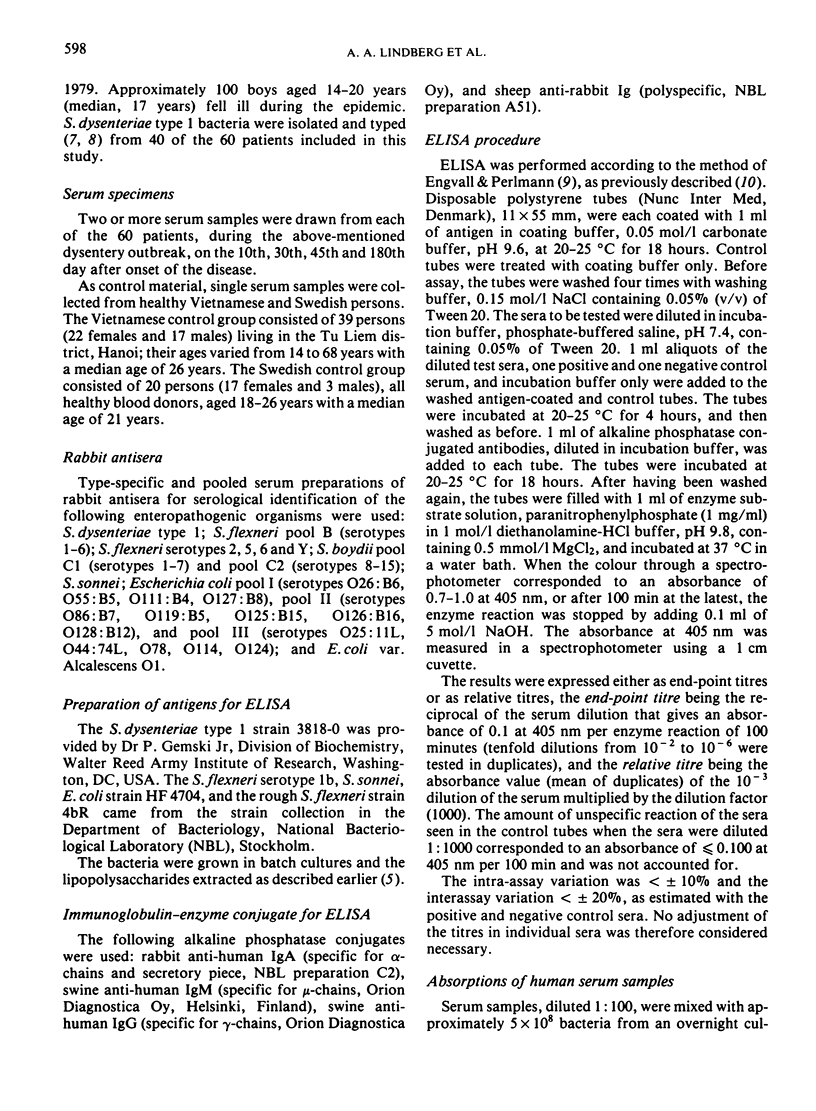
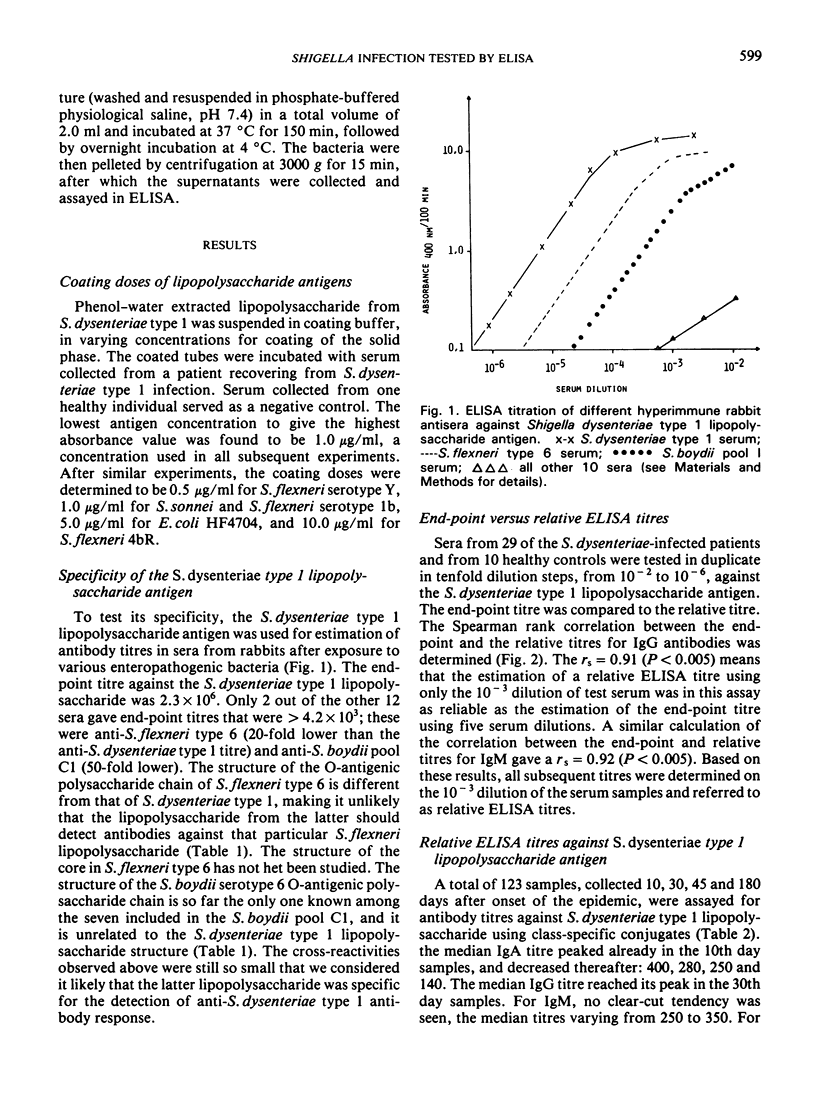

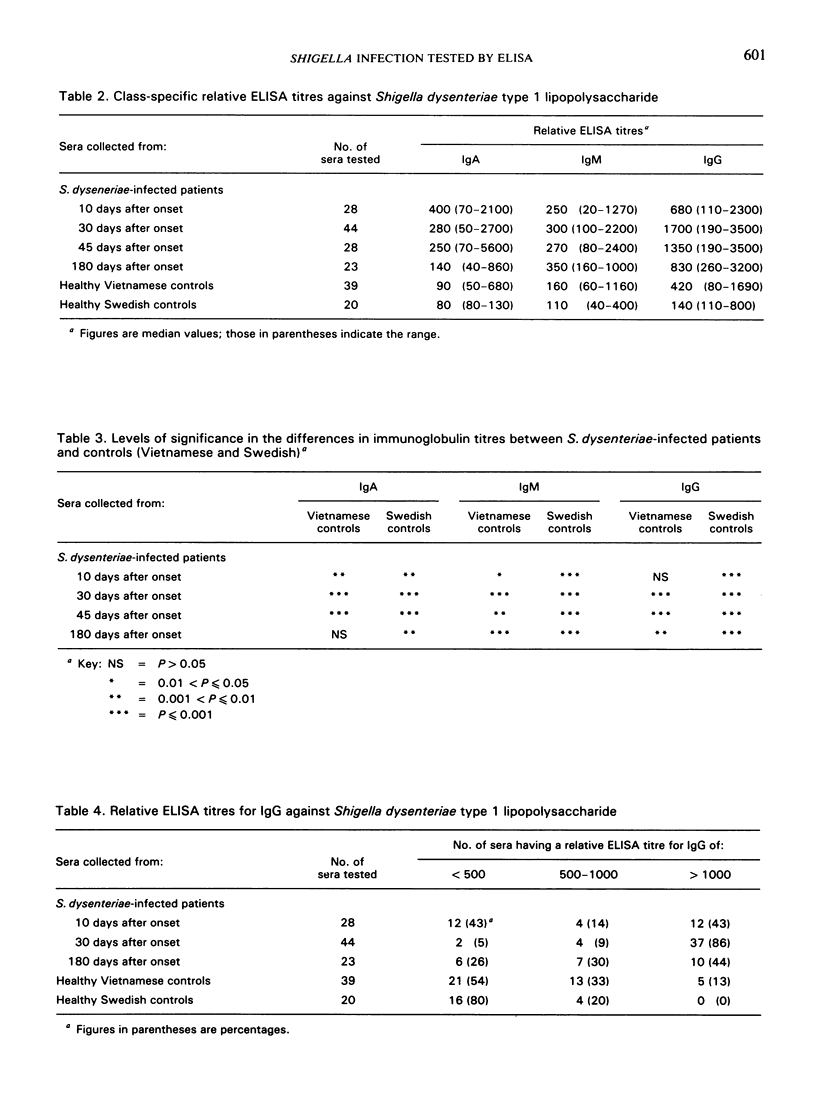
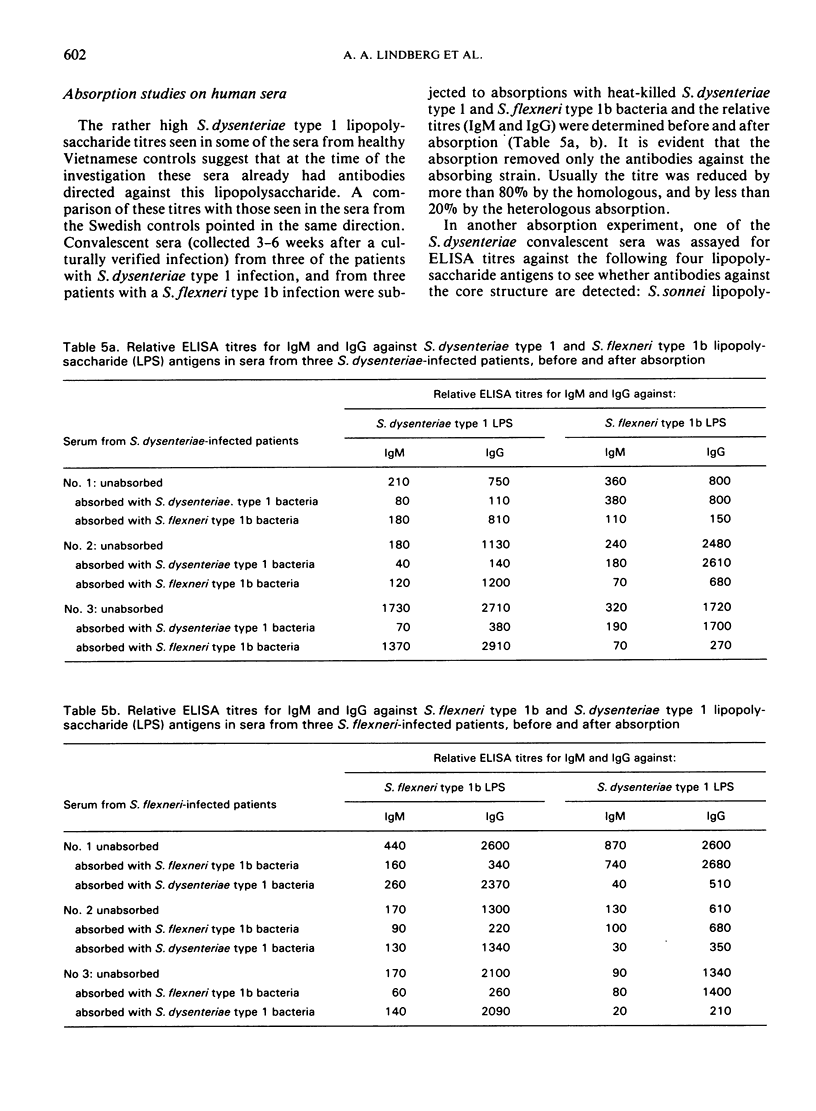
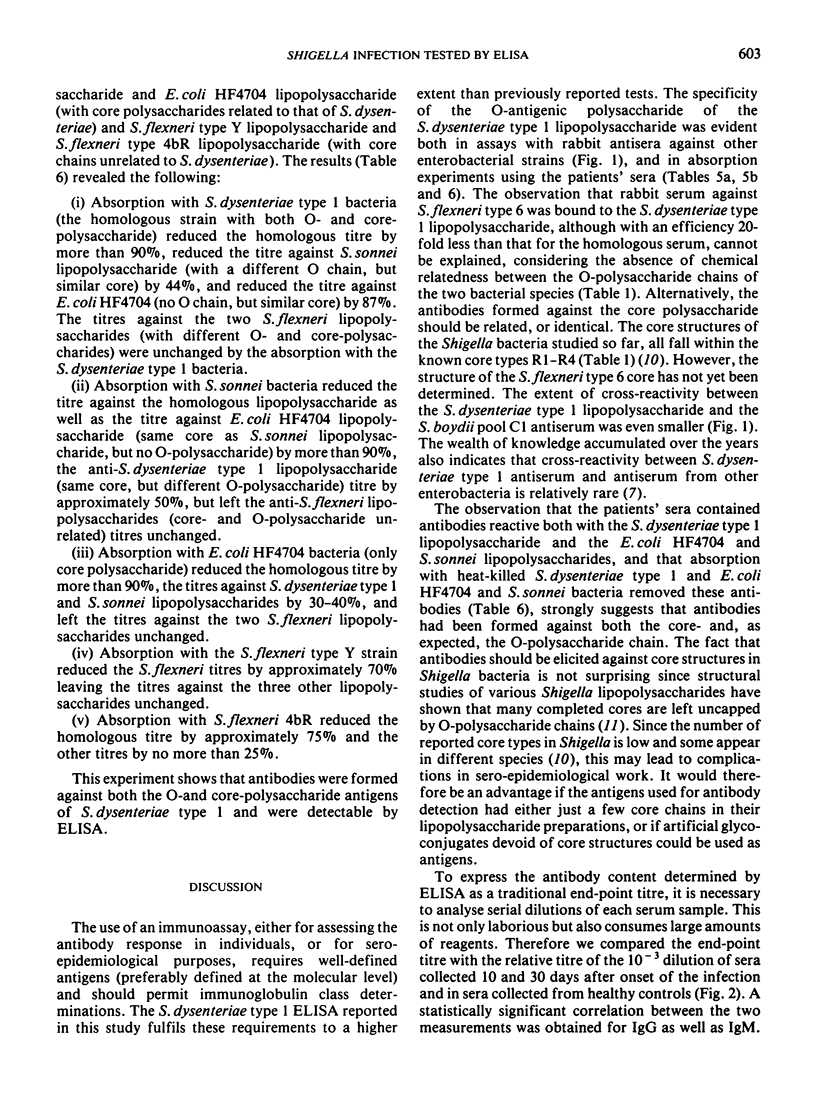
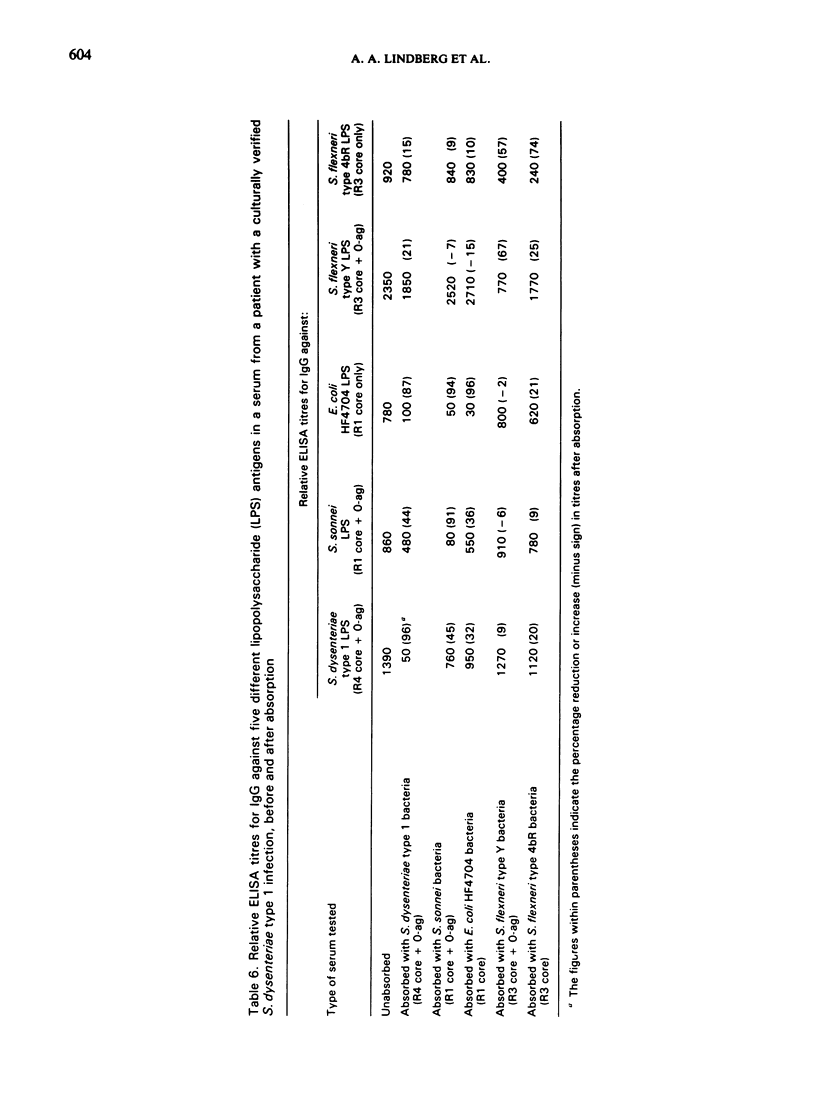
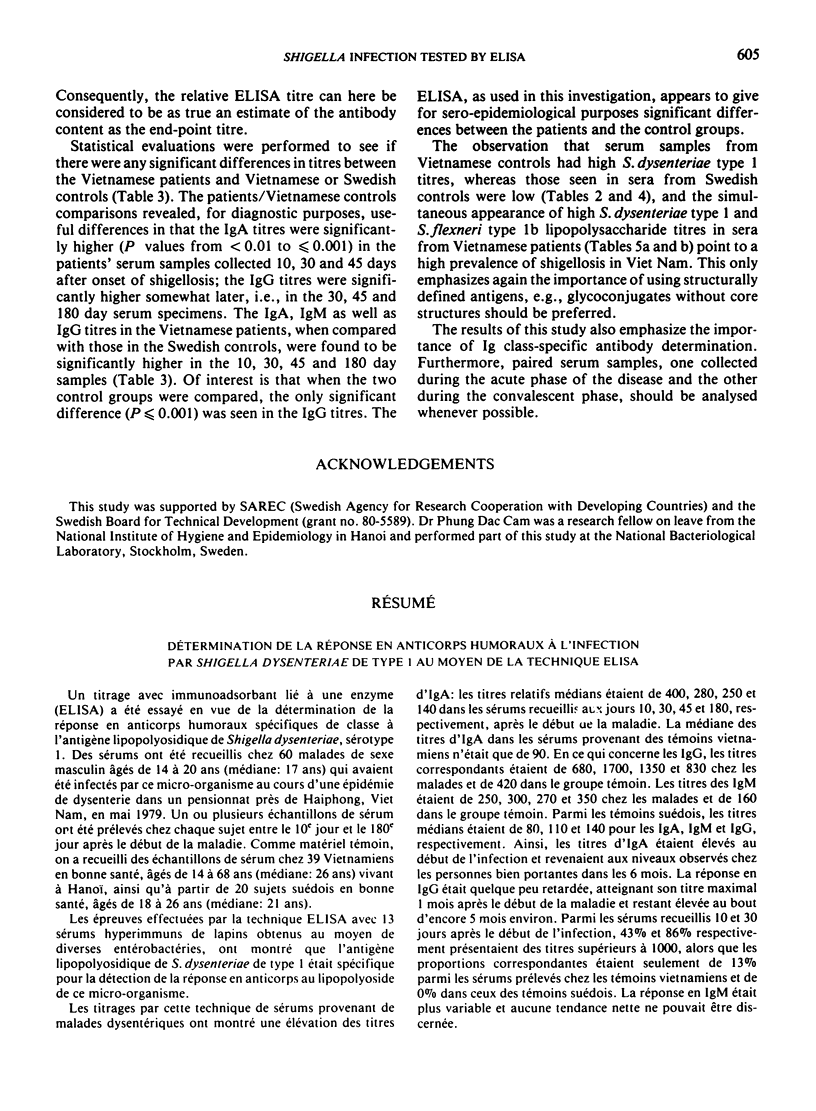
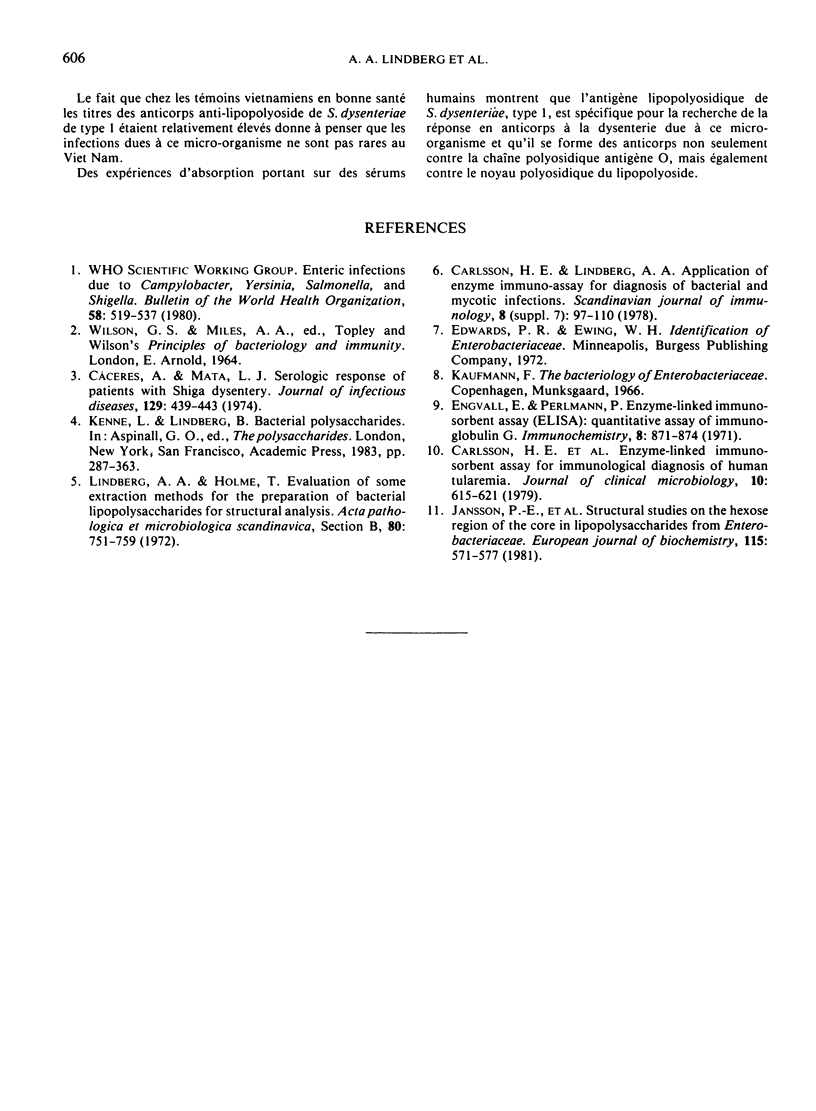
Selected References
These references are in PubMed. This may not be the complete list of references from this article.
- Carlsson H. E., Lindberg A. A., Lindberg G., Hederstedt B., Karlsson K. A., Agell B. O. Enzyme-linked immunosorbent assay for immunological diagnosis of human tularemia. J Clin Microbiol. 1979 Nov;10(5):615–621. doi: 10.1128/jcm.10.5.615-621.1979. [DOI] [PMC free article] [PubMed] [Google Scholar]
- Cáceres A., Mata L. J. Serologic response of patients with shiga dysentery. J Infect Dis. 1974 Apr;129(4):439–443. doi: 10.1093/infdis/129.4.439. [DOI] [PubMed] [Google Scholar]
- Engvall E., Perlmann P. Enzyme-linked immunosorbent assay (ELISA). Quantitative assay of immunoglobulin G. Immunochemistry. 1971 Sep;8(9):871–874. doi: 10.1016/0019-2791(71)90454-x. [DOI] [PubMed] [Google Scholar]
- Jansson P. E., Lindberg A. A., Lindberg B., Wollin R. Structural studies on the hexose region of the core in lipopolysaccharides from Enterobacteriaceae. Eur J Biochem. 1981 Apr;115(3):571–577. doi: 10.1111/j.1432-1033.1981.tb06241.x. [DOI] [PubMed] [Google Scholar]
- Lindberg A. A., Holme T. Evaluation of some extraction methods for the preparation of bacterial lipopolysaccharides for structural analysis. Acta Pathol Microbiol Scand B Microbiol Immunol. 1972;80(5):751–759. doi: 10.1111/j.1699-0463.1972.tb00203.x. [DOI] [PubMed] [Google Scholar]
- U.S. District Court, S.D. New York State of New York v. Schweiker. Fed Suppl. 1983 Feb 14;557:354–363. [PubMed] [Google Scholar]


